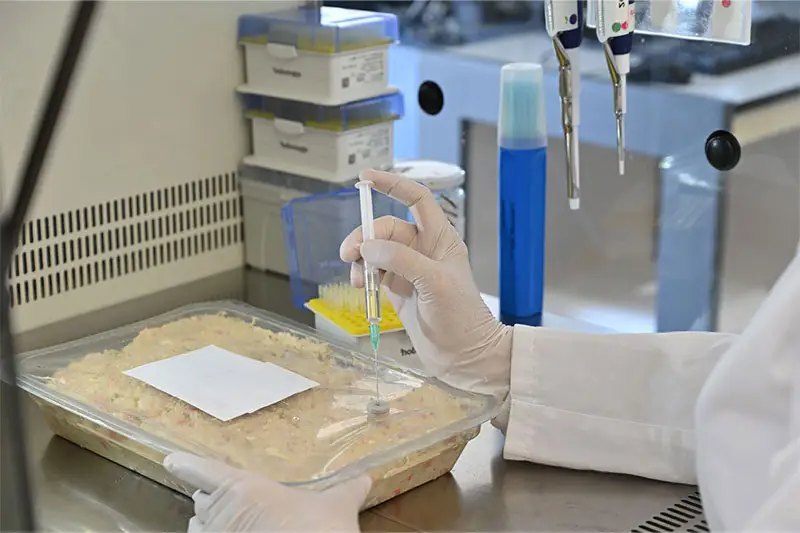ISO 16211 Microbial Growth Detection in Cosmetics
The ISO 16211 standard is a critical tool used to ensure that cosmetic products are safe for consumer use, focusing specifically on the detection of microbial growth. This service ensures that no harmful microorganisms grow during product development or shelf life, thereby protecting public health and safety.
Microbial contamination can lead to a range of issues including spoilage, allergic reactions, and severe infections. The ISO 16211 procedure provides precise conditions for the detection of microbial growth in cosmetic products under laboratory-controlled environments. This is essential because it helps manufacturers understand how their products behave when exposed to different temperatures or storage conditions.
During testing, samples are inoculated with microorganisms and incubated at various temperatures that simulate real-world conditions. The growth of these organisms over time indicates whether the product formulation effectively prevents microbial contamination. Compliance with this standard is not only about avoiding legal penalties but also about maintaining a positive brand reputation by ensuring high product quality.
The methodology involves several key steps, including preparation of inoculated samples, incubation at specific temperatures (typically 25°C and 37°C), observation intervals to detect visible growth, and the use of appropriate media for microbial recovery. The testing process is designed to mimic real-life scenarios while providing reproducible results.
Results from ISO 16211 testing are crucial inputs for product development teams who can then adjust formulations accordingly if necessary. For quality managers responsible for ensuring product safety, this service offers a robust framework within which they can work towards achieving regulatory compliance and consumer trust.
To summarize, the ISO 16211 standard plays an important role in safeguarding public health by preventing microbial growth in cosmetic products. It provides structured guidance on how to conduct these tests effectively and consistently across different laboratories worldwide.
Applied Standards
The ISO 16211 standard for the detection of microbial growth in cosmetics is widely recognized as one of the most stringent methods available. It aligns closely with other international standards such as those from ASTM International and EN (European Norm).
- ISO 16211:2019 - This edition specifies microbiological testing procedures for cosmetic products to detect microbial growth.
- ASTM E375-18 - Offers additional insights into the biological aspects of cosmetology, enhancing understanding beyond just ISO 16211.
- EN 14060:2019 - Provides European-specific guidelines that complement ISO standards by addressing specific regional concerns and practices.
These standards provide a comprehensive approach to ensuring product safety. By adhering strictly to these regulations, manufacturers not only meet regulatory requirements but also enhance their reputation among consumers who are increasingly concerned about the safety of personal care products.
Scope and Methodology
The scope of ISO 16211 includes all types of cosmetic products, from lotions to makeup bases. The methodology focuses on detecting microbial growth through controlled incubation processes under defined conditions. Here's a detailed breakdown:
- Sample Preparation: Samples are prepared according to specified protocols that ensure accurate representation.
- Inoculation: Known quantities of microorganisms are added to the samples, simulating potential contamination levels.
- Incubation: Samples are incubated at 25°C and 37°C for set periods, monitoring for any visible signs of microbial growth.
- Media Usage: Specific media types are used to promote the recovery and identification of microorganisms present in the sample.
The entire process is designed to simulate real-world conditions as closely as possible while maintaining consistency across different laboratories. This ensures reliable data that can be used effectively by R&D engineers during formulation adjustments based on test results.
Use Cases and Application Examples
- New Product Launch: Before launching a new cosmetic product, companies use ISO 16211 testing to ensure it meets safety standards before entering the market.
- R&D Innovation: During research and development phases, this test helps identify optimal formulations that resist microbial contamination best.
- Supply Chain Oversight: For procurement teams, compliance with ISO 16211 ensures suppliers meet quality expectations consistently.
- Quality Assurance Programs: Regular testing according to these standards forms part of ongoing quality assurance programs aimed at maintaining consistent product safety.
These applications highlight the importance of this service in ensuring that cosmetic products remain safe and effective throughout their lifecycle. Understanding how to apply these tests correctly is vital for those involved in every stage of a product's journey from lab to shelf.





